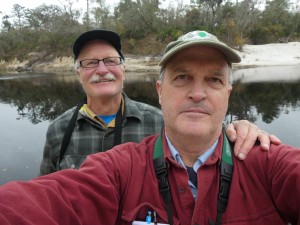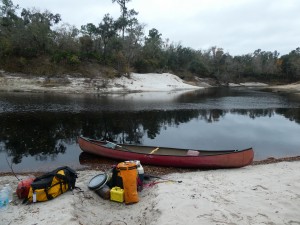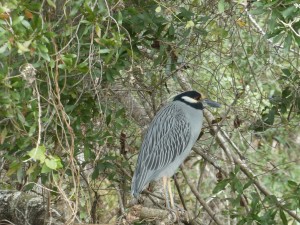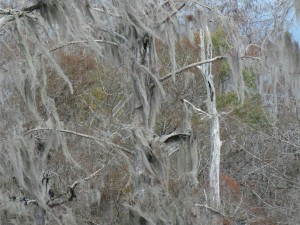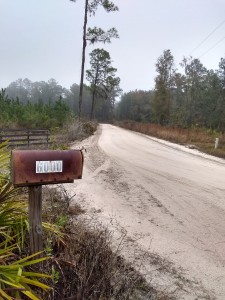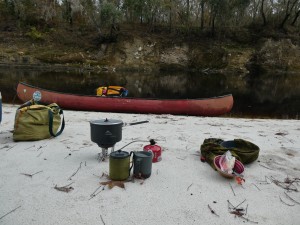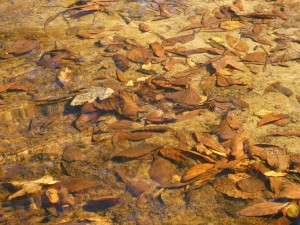CHAPTER 8: DECEMBER – BROTHERHOOD
Early on I knew that the tough part of my yearly schedule would be the heart of winter. The months of December, January, and February; months when Montana is frozen hard and boats are sensibly stored for the season. I knew the mid-winter lineup would be the most challenging to figure out, the hardest to get to, and likely the most expensive.
One of my biggest worries about retirement was the pitfall of free time. Life needs a certain tension to be interesting and to keep me out of trouble. At least my life does. In my freelance career, deadlines have always been welcome. When things are loose, no expectations, it’s too easy to let it slide. I was worried I’d fall prey to frittering time away, getting sucked into endless news streaming in the era of Trump, letting days slip by where I couldn’t remember what I’d accomplished. Even worse, the potential to get lured into old, unwanted habits.
December, January and February turn out to be a pretty effective antidote against that tendency. Planning a year’s worth of paddling trips, without breaking the bank, and while juggling the other responsibilities of life is a half-time job. I have to keep months ahead of the game to get things organized, find contacts, seek partners, arrange logistics. There are repeated dead ends, dates that don’t add up, trips that cost too much.
My first break comes in a conversation with Jeff King. “I’ve got the last half of February open,” he says, one day. “I was thinking about something in the Big Bend area. Any interest in joining me?”
We have coffee one morning with calendars in hand. It’s still early, but we bracket out a couple of weeks during the last half of February, a loose plan to paddle the three canyons of the Rio Grande in Big Bend National Park, and decide to tighten it up once we get closer.
With that in hand, I email a couple of friends in warmer climes for paddling destinations in their parts of the world – a cousin in San Diego, an old family friend in Mississippi, and a friend I collaborated with on several magazine stories in northern Florida. Any suggestions?
Two out of three come back almost immediately. Mississippi is not encouraging, and things in her life are in turmoil. My cousin in San Diego almost laughs at me through the email. “We’ve been in a decade-long drought,” she writes. “There’s nothing within a six hour drive of us unless you want to paddle in the ocean.”
I had thought about the ocean, but it’s not really my jam. Baja could be an option, maybe, but more complicated than I want to deal with, the border is an absolute shit show, and who knows how friendly Mexicans will be, what with president Trash Talk. Meantime, weeks go by and I don’t hear from Florida. I’m beginning to wonder if I have the right email when he finally replies.
Joe Hutto sounds somewhat encouraging. He’s busy writing a book. He has recently married. Yes, there are paddling destinations he might suggest, but he’s vague about any specifics. His new wife is Rita Coolidge. Yes, that Rita Coolidge, and it just happens that she’s giving a concert in Bozeman in the late fall. He’s going along and maybe we could meet. I go online and buy tickets to the concert.
That’s enough for me. I start looking at maps, firing up ideas I’ve had on the edges of my vision for decades. I’ve always been drawn to the Suwannee River, for one thing. Might be that sweet southern song. Might be that when it comes down to it, there really aren’t that many multi-day river trips available in Florida. Many rivers in the state emerge abruptly out of limestone springs and have short runs to the coast, or disappear again underground. Only a few navigable rivers run any significant distance. No doubt there are candidates, some of them stupendous, but from the vantage of Montana, with a couple of months lead-time, the choices are limited.
I do a little research, find that there is actually a pretty active Suwannee River paddling following, with some non-profit involvement, some descriptive river guides, camps set up along the banks, a couple of outfitters for rental gear and shuttles. Promising.
On impulse, I send out an email to my brother and sister, both of whom live in New England, about joining me. My sister can’t get the time off, but my brother, Craig, seems interested. He’s in his final year of work with an educational consulting firm, planning for June retirement. His workload has been cut back and he’s got a lot of vacation time in the bank and credit card miles saved up. And he’s an obsessed bird watcher. One of those “Stop the car! There’s a long-billed dowitcher in those cattails. Turn around!” That kind of bird watcher. I know damn well that, for Craig, Florida in December might be irresistible.
And I’m right. It only takes three emails and a follow up phone call to have dates penciled in and the early logistics set in motion. I call an outfitter in northern Florida. Craig looks into flights. The focus narrows down.
These kinds of trips – unknown terrain, few contacts, not much reliable intel – are bailing wire and duct tape affairs. The outfitter I chat with has a mixed message. He seems reasonably certain that we can get a trip in, that time of year, but it will depend on water levels. The year before, in the same window of December, the river was flooding at historic levels and was closed to travel. This year it’s been dry, but you never know when a tropical storm will brew up. He threw out some possible itineraries, said he could shuttle us and rent us a boat.
Craig and I book flights to Tallahassee, where Hutto lives, and plan to rent a car for the week. We split up the menu, dry some food on home dehydrators, talk about gear. There is a lot that could go sideways, but if worse comes to worst I’m thinking we can cobble together some sort of outing, paddle around with manatees, do some bird watching in a swamp, something.
In November Marypat and I go to Rita Coolidge’s concert in town, just a few blocks from home. It’s a packed house with a lot of gray hair. Coolidge has been at this for more than half a century. Now in her 70s, she has had a career that included touring with the likes of Joe Cocker and Eric Clapton back in the Woodstock era, a career that earned her a handful of gold and platinum records. Marypat and I have a couple of those vinyl records in a box somewhere. She was married to Kris Kristofferson for a while. She managed to avoid the overdose and excessive lifestyle traps that brought down so many of her contemporaries and she is still standing on stage for a two-hour set, knocking out songs, old and new, backed up by musicians from Los Angeles she’s worked with for years. Absolute pros, all around.
We meet briefly after the show. Hutto breaks away long enough to talk about some paddling destinations, but nothing very specific. It’s late and they are tired. Touring is grueling in your 20s, never mind keeping it going into your 70s.
“I’m so ready to be done,” Coolidge says. “I mean, why can’t I retire too?”
I give Hutto the window of our dates, tell him we’d love to knock around and see some of his favorite haunts on the edges of our time there. We leave it at that.
I’ve made more stunning geographic leaps, but Montana to Florida is a huge ‘L’-shaped plane saga, straight south to Dallas, a three-hour wait in an amorphous airport, and straight east to the panhandle of Florida, hopping over time zones, switching up climate, landing in an exotic place. I get off the plane near midnight. The night is warm and dense. My brother has stayed up way past his normal bedtime to meet me with our rental car, already checked into a motel he booked with credit card miles.
“Not in Montana anymore,” I observe.
“Or Maine,” Craig agrees.
In the morning, after a regrettable hotel breakfast, I call Hutto. “Come on over,” he says. “We’ll put on coffee.”
Half an hour later we’re hanging out in his kitchen, Rita Coolidge in a bathrobe asking whether we take cream, drinking coffee together. And five minutes after that we’re tromping around Hutto’s back yard with binos around our necks, and Craig is in bird-watching heaven.
If Joe Hutto isn’t one of a kind, he’s at least very rare. I first came across him in a movie with the unlikely title, My Life as a Turkey, which tells the story of Hutto’s years-long affiliation with a brood of sixteen young gobblers.
From a young age, Hutto has spent a great deal of time in the company of critters. These days he calls himself an Ethologist, but as a youngster he just bonded with wildlife and couldn’t get enough of it. He spent time in the woods, picked up orphaned animals here and there and took care of them. He was an only child and his parents were tolerant types. They lined the walls of his bedroom with linoleum and imposed only one limitation on his menagerie – no venomous snakes. Set free, Hutto took on hawks, foxes, wild boars, a boa constrictor, crows, ducks, raccoons, anything he could get his hands on.
“Kind of put a kink in sleep-overs when I was a kid,” he told me once. “You know, don’t mind the boa constrictor, he doesn’t take up much room in the bed.”
Mind you, this wasn’t a caged or domesticated relationship. He might coop up his brood when he was off at school, but outside of that, he wandered with his charges through the woods and fields and wetlands of northern Florida. The animals weren’t pets, they were companions. Hutto became addicted to spending time with wild animals and learning from them. When the young animals matured and gained independence, off they’d go, much as they would naturally.
Hutto told me about a fox he’d brought up that one day disappeared. Months went by. Hutto assumed the fox had struck out on its own as an adult, or, more likely, been hit by a car or shot by a farmer. Then one morning Hutto was sitting in his cabin with the door open when that fox ambled back in like no time had passed, hopped up on the bed and visited for a while. Then it strolled back out the door and never came back.
Hutto gained a local reputation. His avocation continued as he grew up. In college at Florida State University Hutto studied archaeology, but continued to spend time with animals. That is also where Hutto and Coolidge first met. They played music together, fell in love, hung out, but then they each went their way. Coolidge embarked on her long musical career and Hutto kept up his studies and his quirky alliances.
One day, when Hutto was living in a remote cabin in backwoods Florida, someone dropped off a bucket of sixteen turkey eggs. Hutto knew exactly what to do. He also knew the responsibility he was taking on. He picked up an incubator and waited, periodically clucking away like a hen turkey over the warm brood of shells. When the baby birds broke free, Hutto was the first thing they saw.
For the better part of the next two years, Hutto spent every hour of every day with those growing birds. For that period of time Hutto had essentially no human interaction. He was, for all purposes, a mother turkey. He walked the Florida woods with them, wandered fields, watched the turkeys grow and develop personalities, talk to each other, find food and water, suffer trauma, observe their surroundings.
Remarkably, Hutto was also accepted as part of the flock by other wildlife in the area. In the company of his brood, he’d wander among black bear, deer, snakes, animals he’d rarely see on his own, but which accepted him as nonchalantly as they would a true mother turkey.
The film is a reenactment of Hutto’s time with the flock. At the end of the movie, a postscript mentioned that Hutto was presently living with a band of mule deer in Wyoming. “What the heck?” I said, when I read that. “How does that work?”
In one of those small-world coincidences, it turned out that Hutto was living with the deer roughly six miles from my parent’s home in Lander, Wyoming. During a visit to my folks, I picked up the local phonebook and there was Hutto. I called him up.
“I’m a fan of yours, “ I told him, when he answered. “I’m also a writer. I’d love to buy you a cup of coffee some time.”
Two days later we met for breakfast at a local café and spent several hours talking. Hutto became a regular contact whenever I went to visit my parents, and over time I wrote several magazine stories about him, including a lengthy interview for The Sun Magazine. I met some of his mule deer comrades. I heard about the incredible string of interactions he’d had with wildlife over the years, from wood ducks to bighorn sheep. More importantly, I was introduced to the underpinning of philosophical wisdom that grew out of those relationships. And we became friends.
Tragically, Hutto’s wife at the time was struck down by a lingering bout with cancer. He had watched animals in the throes of gruesome injury, killed by hunters, maimed by barbed wire, struck by vehicles. He witnessed the grief and mourning of their comrades. Here was his own.
“I have not learned any extraordinary wisdom about the nature of life or come to see nature as kind,” Hutto told me after his wife’s death. “It’s not. My wife contracted a terminal form of cancer. She had led a healthy life, never had a bad habit, and yet this awful disease took her. It was one more tragedy I had to experience up close. She was one more beautiful creature who died with her head in my lap. This lifetime of study has left me disappointed by the brutality of it all.”
After his wife’s death, Hutto lasted another season or two in Wyoming, but eventually sold the property and moved back to his home country in Florida. He hadn’t been back long when a friend mentioned that Rita Coolidge was coming to town to do a reading and book-signing of her recently released memoir. Hutto went to the event, stayed in the back of the room, was shy about reconnecting. Friends pushed him forward. They hugged. They went out afterward to talk. They talked all night. They haven’t been apart since.
Hutto and Coolidge may live on the outskirts of a bustling city, but their back yard abuts a wetland with towering cypress and pine trees, small ponds, habitat rife with birds, gators, otters, deer. We squelch around on deer paths. Craig is intent, picking up songs, catching movement. Piliated woodpeckers, a pair of otters in a pond, song birds and warblers. Hutto perks up at Craig’s enthusiasm, starts talking about migrating water moccasins wriggling across the yard, owls in the trees just past his lawn.
The three of us hop in the rental car and follow Hutto’s directions to Wakulla Springs, the largest freshwater spring in Florida, nearly 200 feet deep, a powerful explosion of crystal clear water ushering an instant, full blown river out of an extensive underwater limestone cave system. The spring gushes 200-300 million gallons of water a day, feeding the short, nine-mile-long river. The springs gained fame after the discovery of mastodon skeletons and bones of other extinct species in the waters, along with bones and artifacts of indigenous people from at least 12,000 years ago. More recently, the springs and surrounding habitat have been the set for Tarzan movies. A stately lodge was constructed on the site by Edward Ball, who later donated the surrounding land to the state under the condition that the reach of river a mile or two below the ‘rise’, and extending down to the next highway bridge, would be permanently off limits to humans. No one allowed, period. Ever since, for more than half a century, those miles of river have been untouched by humans, essentially unvisited.
We buy $8 tickets for the boat tour that putts a mile and a half downstream and back. It is a gray, dreary day. Only a few people are on the ride. The driver doles out historical tidbits, humorous stories, and identifies wildlife as we idle slowly along shore. Despite the touristy nature of the outing, it is rich. Alligators lounge on the banks, anhingas air out on gnarled branches, ibis, egrets, hooded mergansers, black vultures. The river course teems with life and jungle-like vegetation. Where the boat turns around, we peer downstream into the void where humans have been shut out and wildlife goes about its business. It’s a tiny postage stamp of a preserve, but it serves as a reminder of what was, and what might come back if humans stepped offstage.
Hutto grew up in a wild Florida where a young man undaunted by adventure could slip into the forests and swamps and fields, into the thicket of nature, encountering snakes, finding artifacts, adopting creatures, discovering jewels of habitat, swimming with manatees, being half wild himself. Florida is not that place anymore, but if there is a vestige of that quality, it is in the northern and panhandle part of the state. “Experience Real Florida,” the billboards say.
That night we meet Hutto and Coolidge at their favorite diner, a hole-in-the-wall place tucked inauspiciously in a strip mall. The grits and shrimp are the opposite of inauspicious, almost as memorable as the company.
Craig and I drive east to the Suwannee from Tallahassee the next morning. Pastures, small towns, surviving plots of forest, muddy streams. We stop for gas and go inside to pee. A heavy-set, bearded biker dude with solid tattoos everywhere watches us from behind the counter.
“Have a blessed day,” he says, as we leave.
“Yeah, forgot,” Craig says. “Bible belt.”
“Pretty unlikely looking church-goer,” I say. “Probably a story there.”
Craig’s phone has the outfitter’s location and we follow directions that wind us through a vast state park and campground, down to a steep, concrete boat ramp with the dark river at the bottom of it. A couple of beat up vans sit in the gravel lot, racks of dented aluminum canoes. When I called, I imagined a log building with maps on the walls, racks of bug dope and nature guides, paddling accessories, snacks. Instead the ‘office’ is a phone booth sized kiosk with a sliding window and a guy named Steve with a cell phone. He is waiting for us. It is low season on the river, and low water to boot, so things are pretty quiet.
“This place is hopping starting in February,” he says. “It can be busy in September and October too. Right now you’ll have the river to yourself.”
Fine by us, as long as there’s water to float the canoe. We talk about our itinerary, how high up we can go before we’re dragging the boat more than paddling, where the river camps are, what the weather’s supposed to do. It doesn’t take long. I notice that Steve has bible verses up on his computer screen. We pick out a weathered, dinged up Old Town Tripper canoe for sentimental reasons. Both Craig and I started our wilderness canoe careers with that boat. This one has seen better days, but so have all the rest of the canoes in the livery. We get some old-style life vests that neither of us has any intention of wearing, a couple of heavy paddles, settle up by credit card, load the canoe on a trailer and Steve is ready to go.
Steve gives us the twenty-five cent version of his life story as we drive the two-lane roads. He grew up in Kansas, in what sounds like a fairly dysfunctional family, and decided to come to Florida for the warm weather and beaches. He has knocked around picking up jobs over the years since, does some school teaching, started this outfitting business. All of it appears pretty shoestring, but he seems content and cheerful enough. He drives the rattling van upriver to a dirt road with no signage, jounces down through narrow limestone cutbanks at an alarming speed and comes to an abrupt stop at a sandy opening above the river. Three minutes later we are unloaded and he clatters away, leaving us in the faint cloud of his exhaust.
It goes quiet. Where the Wakulla Springs and River were rustling and alive, the Suwannee whispers past through a ghostly silence. We have lunch there on white sand as fine as flour, looking upriver into the cypress and live oak lining low limestone cliffs. The river is as dark as truck stop coffee, the current barely perceptible. Low clouds brood overhead. Not in Montana anymore, I think again.
The Suwannee begins in the vast Okefenokee Swamp on the border between southern Georgia and northern Florida. From there it winds some 250 miles to the Gulf coast, picking up tributaries, replenished by springs, ending up in the mangroves and bayous along the coast. It isn’t what you’d call wild, but there are quiet sections, along with state parks, music venues, riverside houses. The section we’ve settled on courses through sparsely settled country and gives a solid dose of the river’s character. Anything higher up, at this water level, is more shoal than river and we would be walking the canoe as much as paddling it.
Craig and I haven’t been in a canoe together in a while. In fact, even when we’ve been on canoe trips together, we’ve mostly been in separate boats. The load fits easily inside the hull, we climb in, take the first strokes. The boat sets a purling wake through the slow water, we match our cadence. In the first couple of bends there are shallow spots we have to ease over. Then Craig puts his paddle down, picks up his binoculars. Paddling with Craig is a stuttering affair, punctuated with pauses to identify a distant speck of soaring hawk or the flash of color in underbrush. He’s efficient about it. He doesn’t miss much. It usually doesn’t last more than a few strokes.
“Red-headed woodpecker,” Craig says. Or wood duck, Carolina wren, black vulture. The birdlife is sparse, but Craig picks them off one after another, by song or sight, makes quick, shorthand notes in the notebook he keeps in his breast pocket. GBH for great-blue heron, like that. He’s been at this since he was in college, has become somewhat of an entity in the national flock of birding aficionados. He regularly logs his sightings on eBird.org. To call it a hobby is like saying Joe Hutto enjoys being around wildlife.
My first deep wilderness canoe expedition was initiated by Craig in the late 1970s. He and his partner at the time had their sights on a big-volume river in Quebec, the Moisie. He invited me along. It was fairly early in my paddling learning curve, but I was young and immortal. Why not? Four days into the trip, near the border of Quebec and Labrador, Craig and his partner very nearly died when a sudden wind came up during a lake crossing and they capsized. We spent the rest of that day rescuing them from the frigid, white-capped lake, hugging their naked bodies in sleeping bags to revive them, slowly rekindling warmth and life. It was a narrow thing. Day 4! Needless to say, caution became the watchword over the next weeks as we descended the whitewater-filled canyons and treacherous rapids back to the north shore of the St. Lawrence.
Craig and his wife, Beth, joined Marypat and me for the second summer of our first trans-Canadian canoe expedition in 1986. They flew in to our wintering site in northern Saskatchewan and paddled with us for 40 days across the Barrenlands of northeastern Canada. Remote, untouched, vast landscape full of immense herds of caribou, grizzly, wolves, Inuit artifacts, daunting weather and portages and black flies. We didn’t see a soul for more than a month, never mind a fence, road, town or any sign of modern civilization. Only the ghosts of the Inuit who thrived for centuries on the austere landscape before being uprooted by the incursion of Europeans. That old story. For Craig and Beth, fresh from a year of teaching school, it was baptism by fire. It was tough enough for Marypat and me, and we’d had a year of isolated northern travel and living to prepare us.
More recently, Beth was laid low by a rare form of leukemia that imposed an endurance survival marathon on their relationship. For years they weathered a seesaw of grim episodes where the end loomed near, followed by hopeful stretches of remission, followed by yet another relapse and brush with death. More than once we traveled east in support, death hovering in the wings. Beth finally received a successful bone marrow transplant and has been cancer free for almost twenty years, but the battle transformed her, made her frail and vulnerable. Through all of it, Craig has been her champion.
Their adventurous outdoor lives were put on permanent hold after the bout with cancer. In the decades since they have gone out in a canoe maybe once or twice a year to pick fiddleheads or poke around an estuary. A few summers earlier Craig came to Montana for a visit and we spent a day on boisterous whitewater on the Boulder River in a self-bailing inflatable canoe. It may have been the first time Craig and I had partnered up in a canoe since we were teenagers in an aluminum boat, back when paddling together was a good deal more adversarial than cooperative.
That day on the Boulder we slammed through watery holes, slapped down wave trains, wove through fields of whitewater and boulders. It’s a run I do every spring, but Craig hadn’t done whitewater like that in decades. Being together that way in a boat, sharing that watery exhilaration, was a gift.
This first afternoon on the Suwannee we only paddle a handful of miles down to one of the riverside camps maintained by the state. Far enough to get the gist of the landscape. Limestone cliffs, pocked and pitted and convoluted, alternate with white beaches of powdery sand. Overhanging the river, live oaks, cypress, beards of hanging moss swaying in the faint breezes. The river swings through shallow sand bars, past freshwater springs gushing in from the sides. Cypress ‘knees’ poke out of the water and stand like knobby posts along the banks. We have it to ourselves.
The riverside camp is hardly roughing it. A boardwalk ramp leads up to a series of screened platforms. Wheelbarrows are available for portaging loads. A picnic area, bathroom with hot showers, paved walkways connecting to other platforms, electric lights. And it’s free. We pick our platform, unload, set up camp chairs. No one else is around and the campground host is AWOL.
Turns out that taking a walk with Craig is a lot like paddling with him. More than once on the afternoon stroll we take from camp I realize that I’ve been blathering on about something, only to notice that he’s twenty yards back, binoculars on his face, checking out a sapsucker while I’m entertaining myself. My blind eye and consequent lack of peripheral vision doesn’t help keep track of his frequent pauses.
“Not nice to make fun of the handicapped,” I say, when he catches up, chuckling.
Away from the river, seldom-driven dirt tracks, ribbed with bedrock limestone, wind through the woods. The weather report forecasts rain and thunderstorms for the next day. It rains off and on through the night and the morning is gray and sullen. We could paddle, pull on rain gear, ignore the weather, but we have plenty of time so we decide to lay over in camp, take another long walk, play cribbage.
On our walk through hushed, dripping woods, between sightings of black vultures and towhees, Craig brings up our childhood years and our troubled times as brothers. “I didn’t want to let this trip go by without bringing it up,” he says.
It is a topic we’ve skirted for decades. I was not an easy older brother. In fact, I was something of a tyrant, especially in my adolescent years. Craig suffered the brunt of it and that tyranny had a lingering effect.
“It wasn’t until the road trip we took after you graduated from college that I sensed a change,” Craig says. “That was the first time I really felt treated as an equal.”
I remember that summer when we drove my ’67 Chevy pickup across the country, hiked together in the Uinta Mountains and Canyonlands of Utah, both of us on the cusp of self-discovery, what we would make of life, where we’d live, what we’d do. On the fringe of personal frontiers.
Through middle school and high school I treated Craig badly. I don’t have an excuse.
After he brings it up I let it sit as we walk. Craig stops and kneels down to take a picture of a snail on the roadway with his phone, posts it on a naturalist site he uses to identify things or pose questions.
“There were years there when I felt trapped in a version of myself that I knew deep down wasn’t true to who I was,” I say, finally. “I’ve given up trying to figure out where that version of me came from. I didn’t know how to escape from it, but some inner voice told me that I eventually would. I know that didn’t do you much good at the time.”
We walk some more. Craig’s phone pings. In a matter of minutes someone out there in the ether has identified the snail he photographed on a dirt track in backwoods Florida. A house hunkers behind a spreading live oak off the road – mossy roof, a rusting car, screened porch. No one around.
“I don’t know how to make up for that time,” I say. “I am really sorry for the way I treated you. And I’m profoundly grateful that you have found a way to forgive me and go on. At least I hope you have.”
“College was a chance to hit the reset button in my life,” I continue. “I reinvented myself in those years.”
“Me too,” Craig agrees. “It was an opening to become someone outside of home and family and the roles I was constrained by.”
It is not a come-to-Jesus moment there on the roadway. We’re more restrained than that, but it feels like a breakthrough, a lighter load between us, simply to have it out there, to acknowledge it, to agree that it happened, to recognize its power, to express relief at its passing, to apologize out loud. Not an easy thing, even decades distant, for Craig to bring it up, for me to ask forgiveness.
Our rest day call is propitious. During the night thunderstorms roll through close overhead, shaking the shelter, pelting on the roof. The morning is still gray and brooding when we launch, but the rain has quit. We have almost 20 miles to cover if we want to reach the next established camp. We switch sides paddling every hour or so. Craig keeps racking up birds on the list – limpkin, sandhill crane, red-shouldered hawk.
“Right now I’d say that the trip bird is the eastern phoebe,” he says. “I bet there’s one every two-tenths of a mile.”
Being obsessed with birds illuminates a great deal. It’s a thing I’ve noticed on outings with Craig. By clueing into the bird life, you also clue into the season, migrations, what vegetation provides habitat, weather conditions, insect life. Being curious about one layer of nature inevitably connects you to everything else.
Around midday we stop on a beach and brew up coffee. As we sit and eat lunch, sipping from mugs, the clouds break. By the time we pick up paddles again the day is brilliant, the river transformed. Turtles sun on logs. We’ve heard that there are 100-pound alligator snapping turtles in this river, which effectively constrains any impulse to take a dip. The river coils through amber-colored sandbars. We shed layers. Springs pour in from the side of the channel, Spanish moss waves in the breeze, cypress trees with labyrinthine roots, forests of ‘knees’ poking out of the water. It is an enchanting afternoon and we cruise steadily around the sunlit bends.
The campground host is in at the next camp. We arrive late in the afternoon. “At high season this place has 40 people a night,” he tells us. “The line for showers can be 10 deep.”
Today there is one other guy, a hiker out for an overnight along the Florida Trail, which borders the river for long stretches. An armadillo snuffles through the deep leaves outside our screened platform. Woodpeckers drum on nearby trees.
“On this day last year the river was right up to the edge of camp,” the host tells us. “This year it’s at historic lows.” We look down at the tannic flow forty feet below camp.
The Florida Trail system wobbles from the southern tip of the state all the way north, and then doglegs west across the skinny length of the panhandle to the Alabama border. Counting side trails, the system covers some 1,400 miles. Who knew? Much of it doesn’t sound very appealing. In the far south, there is a lot of slogging through boggy wetlands writhing with invasive, burgeoning populations of Burmese python. Farther north, quite a bit of the trail follows dirt roads. But here, along the Suwannee, the trail stays close to the bank and bends its way through the cypress and live oak with frequent views over the river. Here it looks pretty attractive.
We plan a layover day to do some hiking, despite the campground host’s warning that this weekend is a special hunting season. “I wouldn’t be out walking,” he says. But his advice is leavened by the hiker who did just that for 20 miles without incident. Besides, he tells us, there’s a hiatus on hunting in the middle of the day, between 10 and 3, known as ‘Drive Time’. We figure we’ll wear colorful clothing and walk during the break.
The next day, after a leisurely morning punctuated by distant gunshots, we head upstream. The trail is deep with dead leaves, easy to lose, doesn’t seem very heavily traveled. We follow paint blazes in and out of shallow gullies, through stands of cypress trees. The landscape is pitted and sunken, characteristic of the ‘karst’ topography common to limestone. There are sinks and hollows, shallow bowls. This is a state where houses are fairly routinely swallowed up in sinkholes. There is a lot going on in the subterranean layers, where springs gush from the ground at great volume out of nowhere, where cave systems web here and there out of sight, where solid ground can collapse without warning. It is also magical, quiet, dappled with sunlight, and full of birds.
It is warm and sunny. We pose for pictures next to massive cypress trunks, or in thickets of cypress knees the height of baseball bats. I’m pretty vigilant for snakes along the trail, although we’ve been told that the python scourge that has decimated birds and mammals in southern Florida hasn’t pushed this far north. Even so, there are snakes a plenty without counting the invaders. This time of year should be pretty quiet, on the slithering front, but you never know. Craig keeps picking up warblers, a soaring red-shouldered hawk, red-headed woodpeckers. From high banks we look over the rust-colored river with sunlit sandbars. We eat lunch in the shade of a live oak, leaning against a log coated in emerald green moss.
The Burmese python probably gained a foothold in Florida from released or escaped pets, and has proliferated in the southern part of the state over recent decades, wreaking predatory havoc on a wide range of small mammals and birds. Python effectively extirpated the rabbit population in Everglades National Park in less than one year, for example. Fox, raccoon, birds, opossum, bobcats are also frequent snake prey. The pythons can live twenty years or more, and female snakes lay 20-50 eggs at a time. The largest python found in the Everglades was 18 feet long and weighed 100 pounds. No one really knows how many there are. Estimates range from 30,000 to 300,000. And they are hard to hunt. The 2013 Python Challenge, sponsored by the Florida Fish and Wildlife Conservation Commission, complete with bounty money, attracted more than 1,600 hunters but only netted 68 snakes in a month.
The python’s potential spread is unpredictable. The biggest limiting factor on their range is temperature. Some models predict that they will be constrained to southern Florida and a few sections of Texas, while others forecast an alarming spread through a third of the United States, including all three coasts. Another instance where global warming is not our friend. All of this because a couple of pet snakes got loose.
Our hike is uneventful, at least on the snake and camo fronts, and we enjoy another relaxed evening in camp. Craig wins the Suwannee Best-of-Five Cribbage Championship.
“It took an act of will not to get my journal out and record my triumph,” Craig jokes.
“Payback time for all those basketball games of H-O-R-S-E I forced you to play, right?” I say.
“Something like that.”
For me, the highlight of our final day on the Suwannee River is the Alapaha Rise. For our part, we rise early, get on the water with mist steaming off the river. The air is bated. It feels exquisitely southern. We don’t break the silence with chatter. Craig looks at things from time to time, interrupts the paddling cadence, but we glide through the dark water mile after mile.
When the sun burns through the mist we pull in on a point of beach and boil up water for a coffee break.
“I wonder if Beth could maybe handle a trip like this,” Craig muses. “If we used the river camps she might be able to pull it off. Probably have to bring a cot along, but it’s a possibility.”
I can almost hear the wheels turning. Craig was once an avid outdoorsman. He worked for Outward Bound over several summers, had an appetite for adventure. All of that evaporated in the glare of cancer and the reality of survival. Even after that immediate threat receded, life changed in profound ways. His role as a caregiver has informed his identity. And he’s not young anymore. But this trip has rekindled something.
“Yeah, it could work. And even if Beth isn’t up for it, you’ve got friends to go paddling with,” I remind him. “It’s not like Maine doesn’t have canoe destinations.”
In the final miles before the boat ramp where we hope Steve will meet us a few houses appear, perched on the high banks, with ladders and stairs descending to the water, boats tied up. A guy in a skiff is bait-fishing in a dark eddy below a limestone cliff. I keep watching for the gap in the right bank where the Alapaha Rise comes in. We are almost to the take-out and I’m thinking I might have missed it when I see a narrow opening in the layers of limestone.
“Let’s go up,” I say.
We turn the canoe in, enter through a gate of rock. Current pushes against us. We pick up the pace, hang near the cliff where the flow is slower, inch ahead. Then, suddenly, we’re there. It is a circular room of bedrock, gray walls looming overhead. Water blooms up from the depths, blistering the surface. The canoe quivers on the break between worlds. Underneath, who knows? It is a dark and wonderful mystery, this outpouring of clear, clean, subterranean flow ushering out of the earth. Our imaginations follow it down, into the labyrinth of channels and fissures and rooms leading to the source, whatever and wherever that might be.
It is cool and dark and hushed. A chapel. Vegetation screens out the sun. Water, endless water, booms softly under the hull, insistent and gentle at once, like an ominous caress. We keep paddles ready, bracing against the quiet turbulence. We both know better than to speak.

